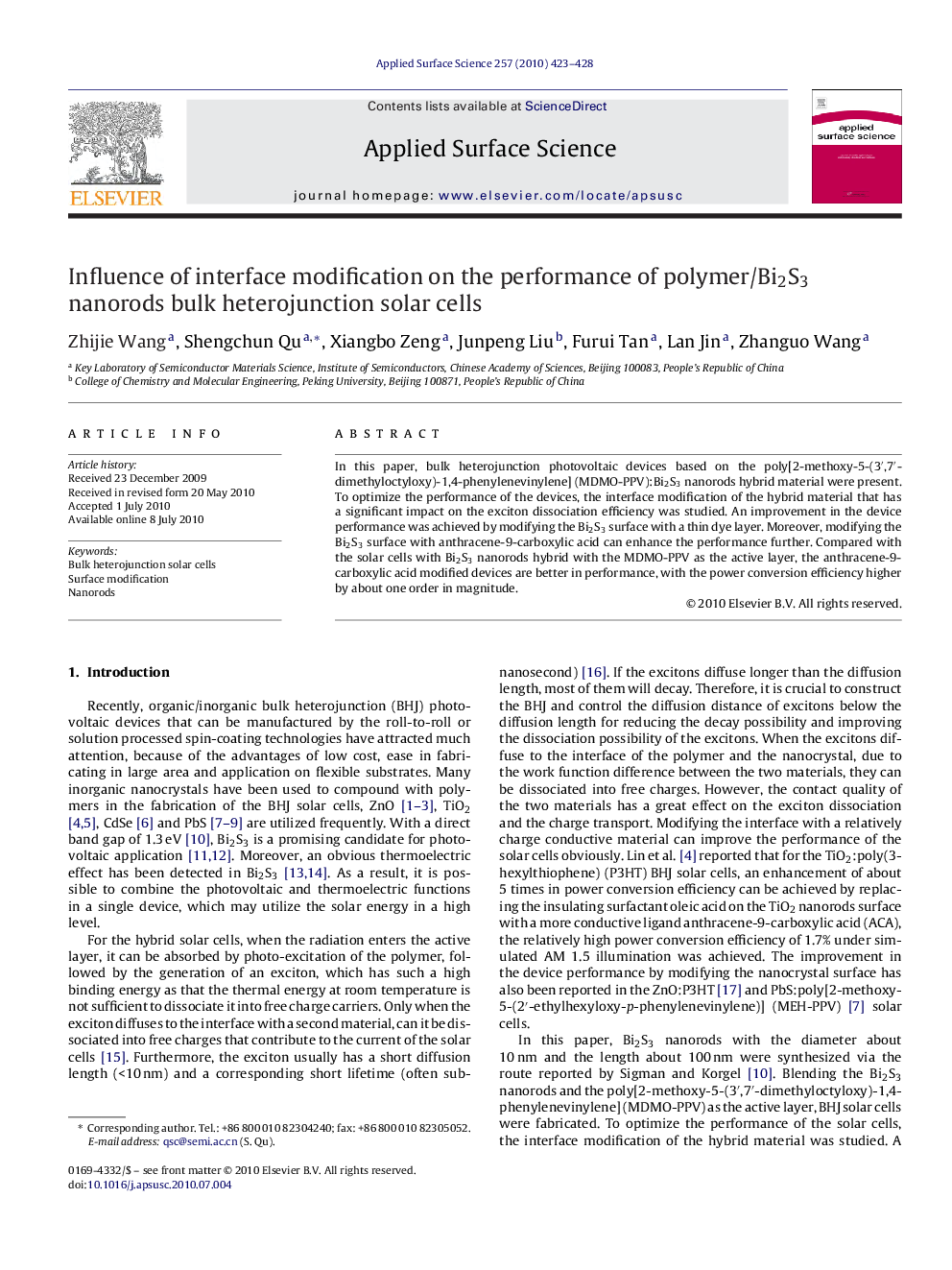| Article ID | Journal | Published Year | Pages | File Type |
|---|---|---|---|---|
| 5364769 | Applied Surface Science | 2010 | 6 Pages |
In this paper, bulk heterojunction photovoltaic devices based on the poly[2-methoxy-5-(3â²,7â²-dimethyloctyloxy)-1,4-phenylenevinylene] (MDMO-PPV):Bi2S3 nanorods hybrid material were present. To optimize the performance of the devices, the interface modification of the hybrid material that has a significant impact on the exciton dissociation efficiency was studied. An improvement in the device performance was achieved by modifying the Bi2S3 surface with a thin dye layer. Moreover, modifying the Bi2S3 surface with anthracene-9-carboxylic acid can enhance the performance further. Compared with the solar cells with Bi2S3 nanorods hybrid with the MDMO-PPV as the active layer, the anthracene-9-carboxylic acid modified devices are better in performance, with the power conversion efficiency higher by about one order in magnitude.
